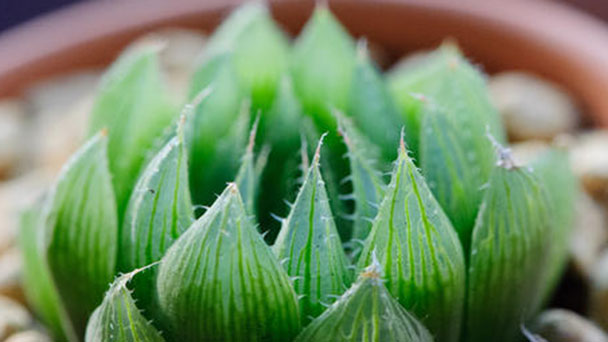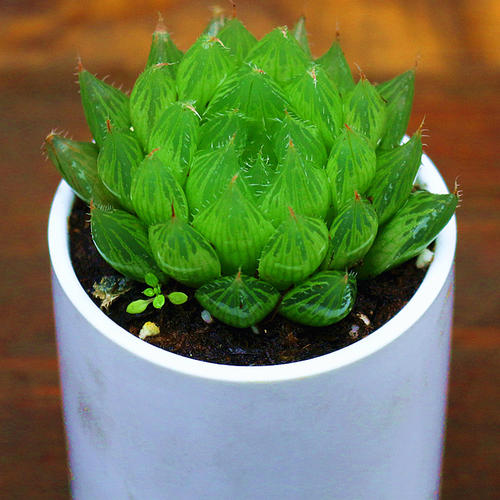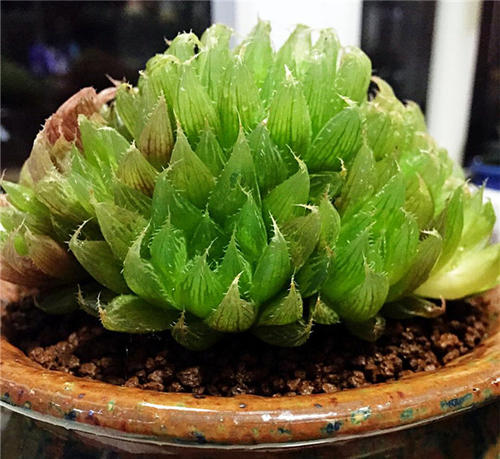How to propagate Haworthia cymbiformis
Written by Maggie
Aug 24 2021

Haworthia cymbiformis can be propagated by beheading, sowing and division, and these three propagation methods are not difficult to operate. The following three propagation methods are sorted out respectively.

1. Haworthia cymbiformis beheading propagation method
A few days before the beheading propagation of Haworthia cymbiformis, be sure to cut off the water, wait until the plant soft, can be beheaded by haworthia cymbiformis propagation processing.
The severed head of a haworthia cymbiformis should not be exposed to the sun, but should be kept in a cool, ventilated place until the wound is dry.
You can choose a soil that is moist and breathable, and plant the head of the Haworthia cymbiformis directly into a pot of soil. You can either cover the growing point with a little soil, or wait until the roots have grown, and then cover it with soil.
2. Haworthia cymbiformis division propagation method
Haworthia cymbiformis division propagation can be combined at the time of changing pots, or in the growing season, first of all, the young plants next to the mother plant of Haworthia cymbiformis should be dug out. Roots and rootless plants must survive. Roots can be planted directly, and rootless plants need to be dried for 1 to 2 days, and then planted after the wound is dry.
Generally, newly planted Haworthia cymbiformis after division propagation should not be overwatered to prevent root rot, and normal management should be carried out after the growth of new roots. You can also choose strong and substantial fleshy leaves for leaf insertion in the growing season, and keep the soil slightly moist after insertion. It is easy to root in the base, and grow small buds, and so on. Small buds are slightly larger and then planted.

3. Haworthia cymbiformis sowing propagation method
Haworthia cymbiformis can also be propagated by sowing, the seeds must be selected healthy, sowing soil can be mixed with vermiculite 3 parts, leaf rot soil or peat soil 2 parts, must be high temperature disinfection of the soil before sowing, in order to eliminate the bacteria and eggs.
After that, the seeds are directly planted in the soil, covered with a thin layer of soil, and more moisture is appropriate at the same time. After sowing, the seeds are covered with glass sheets, and the seedlings usually emerge about 20 days after sowing propagation of Haworthia cymbiformis. After the emergence of the glass, at the same time to keep the environment ventilated, do not make the soil too dry, when the seedlings are too crowded pay attention to seedling transplanting.
Latest Updated
- Benefits of Bugleweed - 7 Science-backed Health Benefits
- Bugleweed Dangers & Side Effects - Is It Poisonous?
- How to Plant Evergreen Trees - What You Should Know
- When to Plant Evergreens - Grow Guide for Evergreen Trees
- 12 Wonderful Evergreen Shrubs for Your Garden
- 12 Popular Evergreen Plants with Pictures for Beginners
- When And How To Prune A Lilac Bush Like a Pro
- How to Grow & Care for Lilac Vine (Hardenbergia Violacea)
- Japanese Lilac Tree (Syringa Reticulata) Care & Propagation Guide
- Shumard Oak Pros and Cons - What to Know
Popular Articles
- Winter maintenance of Antirrhinum Majus
- How to Grow Terminalia Mantaly Tree
- How to Grow and Care for Crossostephium Chinense
- How to grow Antirrhinum Majus in spring
- Peristeria Elata (Dove Orchid) Profile: Info & Care Guide
- Underwatered Snake Plant (Sansevieria Trifasciata) - Signs And How To Fix
- How to Care for Brazilian Jasmine Plant (Mandevilla Sanderi)
- How to Grow & Care for Graptopetalum Purple Delight in Summer
- Rosa Chinensis (China Rose): Plant Growing & Care Tips
- How to Care for Baby Sun Rose (Aptenia Cordifolia)